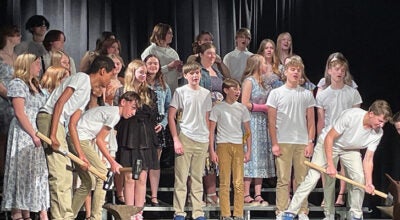Austin one of 1,077 vying for Google network
Published 6:44 am Thursday, May 13, 2010
Internet-behemoth Google isn’t being overly specific with its plans to experiment with ultra high-speed Internet connections in at least one U.S. community, but they should have target areas by the end of the year — a list which could include Austin.
Austin officials submitted an application — a detailed process that included providing data ranging from local weather to topography to demographics — in late March. Since then, the city has been in a holding pattern, waiting as Google mulls over Austin and others. Craig Hoium, the city planning director who ultimately took the lead on the application, said Tuesday that he hadn’t heard anything new from the Internet company in the past two months.
Google executives are not saying whether they ultimately plan on picking one community or several. However, the company does plan on having a list of target communities that will be the subject of “site visits” by the end of the year, Google product manager Minnie Ingersoll said in an e-mail.
Those finalists will be coming from a group of 1,077 applications that encompass all 50 states plus the U.S. Territories. In Minnesota alone, 24 different local governments, including the cities of Rochester and St. Paul, submitted applications.
Google has said previously that it wants to reach at least 50,000 people, and potentially up to 500,000 people, in any selected community. Austin, with a population of roughly 23,000, would seemingly fall below the threshold, but Hoium said outlying communities in the county could boost that number.
The smallish population aside, Hoium said Austin has a number of key selling points, including the Hormel Corporation and the Austin Medical Center, which could make the city enticing to Google.
Google’s specific goals for its high-speed Internet experiment are unclear, but Ingersoll said “we want to see what developers and consumers can do with ultra high-speeds, like creating new bandwidth-intensive ‘killer apps’ and services, or other uses we can’t yet imagine.” She added that the company wants to operate an “open access” network, but does not plan on building a nationwide network. Ingersoll also said it is “too early” in the process to discuss a specific price tag for the project.
Austin community members have rallied behind the idea, putting together the website googleaustinmn.com. There, area leaders have posted their endorsements of the project, and links to Facebook and Twitter accounts have gone up, all in an attempt to woo the mega-company.
And so far, the push seems to be working. Fiber Internet proponent FiberForAll reports that Austin is 13th among all city applicants in level of community support, as measured by dividing the number of people connected with an applicant’s largest social networking base — in Austin’s case, a GoogleAustin Facebook group — with the total city population.
Jeff Ettinger, CEO of Hormel, said this broad community support, as well as the presence of his company and the Hormel Institute, make the city an ideal candidate.
“As a community, we’re growing and we’re changing. And that is why Austin, Minnesota, is the perfect location for Google to test its Google Fiber ultra-highspeed broadband network,” he wrote. “This community understands, better than most, the value of technology in connecting it to the rest of the world.”





